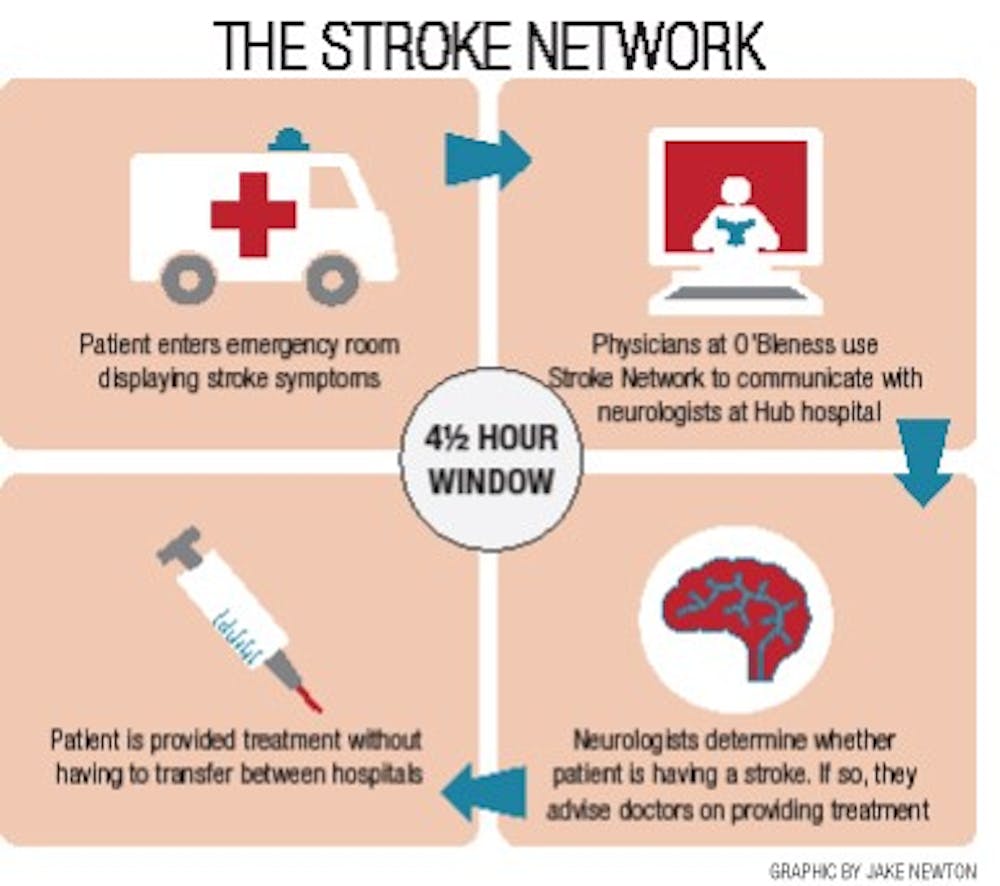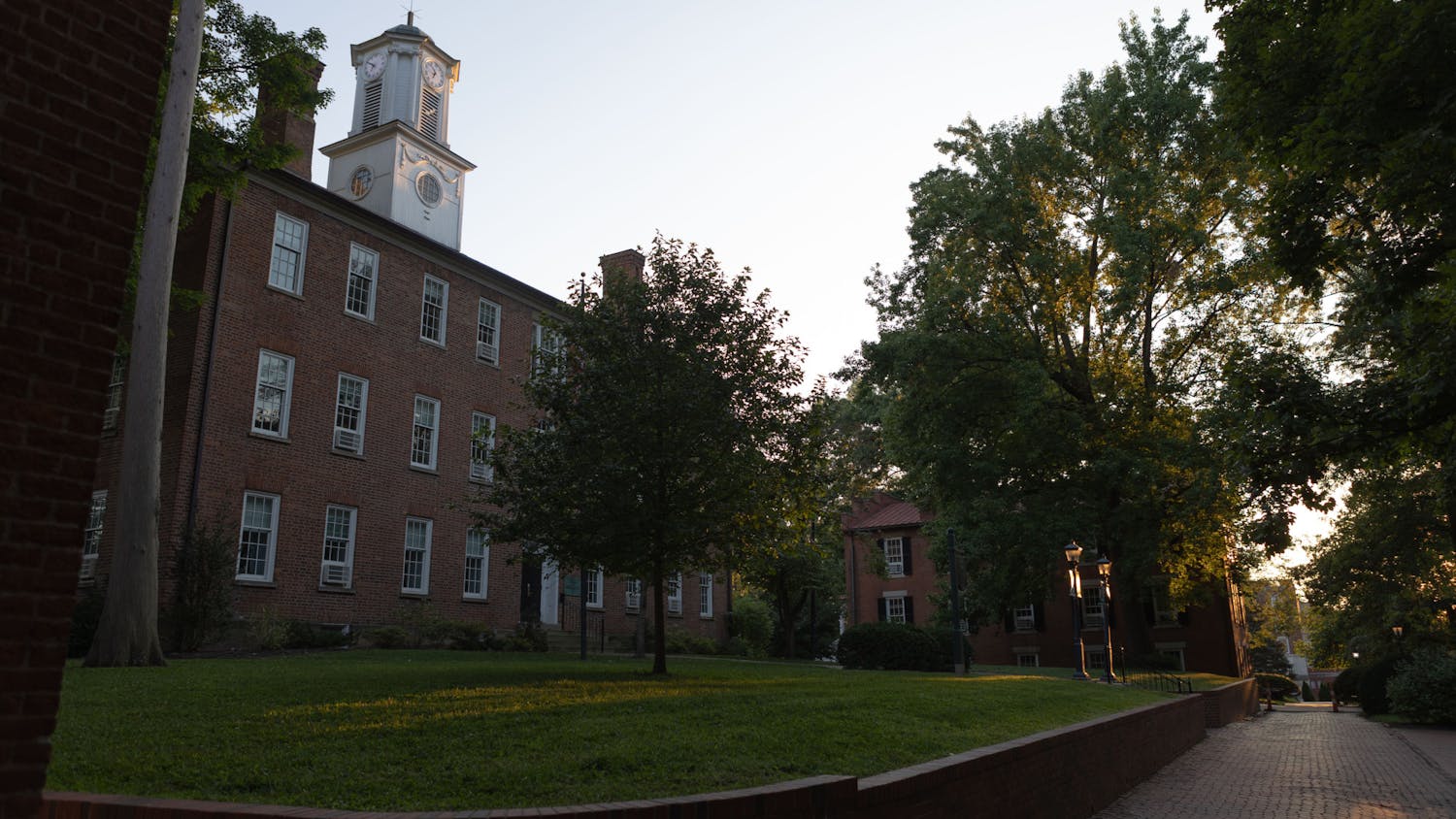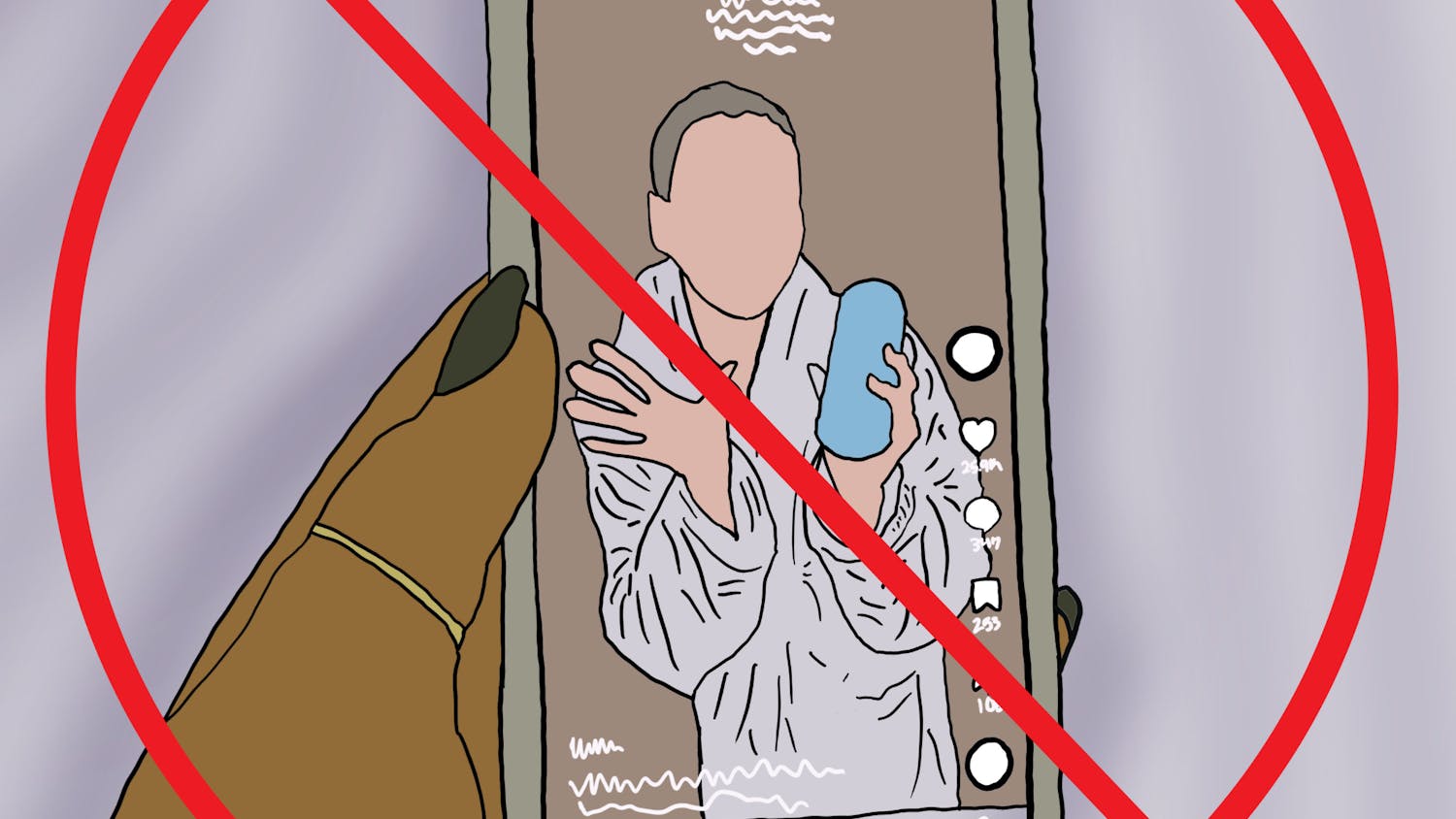A recent advancement in stroke treatment is sending neurologists throughout Ohio to the bedsides of stroke patients at O’Bleness Memorial Hospital.
The new system, called the Stroke Network, allows neurologists at larger hospitals, such as Riverside Methodist Hospital in Columbus, to telecommunicate with patients at smaller hospitals such as O’Bleness.
Ohio Health adopted the two-way audio and video system in August to reduce the time stroke patients must wait before receiving treatment.
“Our timeline (with stroke patients) is you want to have everything done in less than an hour from the time the patient comes in and they are given the treatment,” said Mussaret Zuberi, director of the emergency department at O’Bleness.
A stroke occurs when a clot or broken blood vessel interrupts blood flow to the brain, according to the National Stroke Association’s website. Symptoms include numbness in the face, arm or leg; confusion or trouble speaking; dizziness; loss of balance; and a sudden headache, according to the site.
The Stroke Network operates under a hub-and-spoke model, with the larger hospitals serving as the hubs for the smaller hospitals, or “spokes,” said Paula Meyers, director of Higher Health Stroke Network, based in Columbus.
Hubs include Riverside Methodist Hospital and Grant Medical Center. O’Bleness Memorial Hospital is one of 10 different spokes.
The Stroke Network allows O’Bleness patients to receive diagnoses and treatment under the supervision of neurologists at Riverside without their ever leaving the O’Bleness emergency department.
“What it does is cuts down the time in treating patients … they might take so much time that they are not in the window of getting treatment,” Zuberi said. “So now we can treat the patient in real time instead of transferring them to a neurologist.”
The time window approved by the Food and Drug Administration for administering clot-busting tPA is four and a half hours, Meyers said.
“The quicker the treatment can have drastically life-changing effects,” said Brooke Hallowell, professor of communication sciences and disorders, who specializes in neurological communication disorders in adults.
“Another byproduct of having that service here is that it could lead to more community awareness,” Hallowell said. “So that’s a really good byproduct as well to having a system setup here.”
sg409809@ohiou.edu






